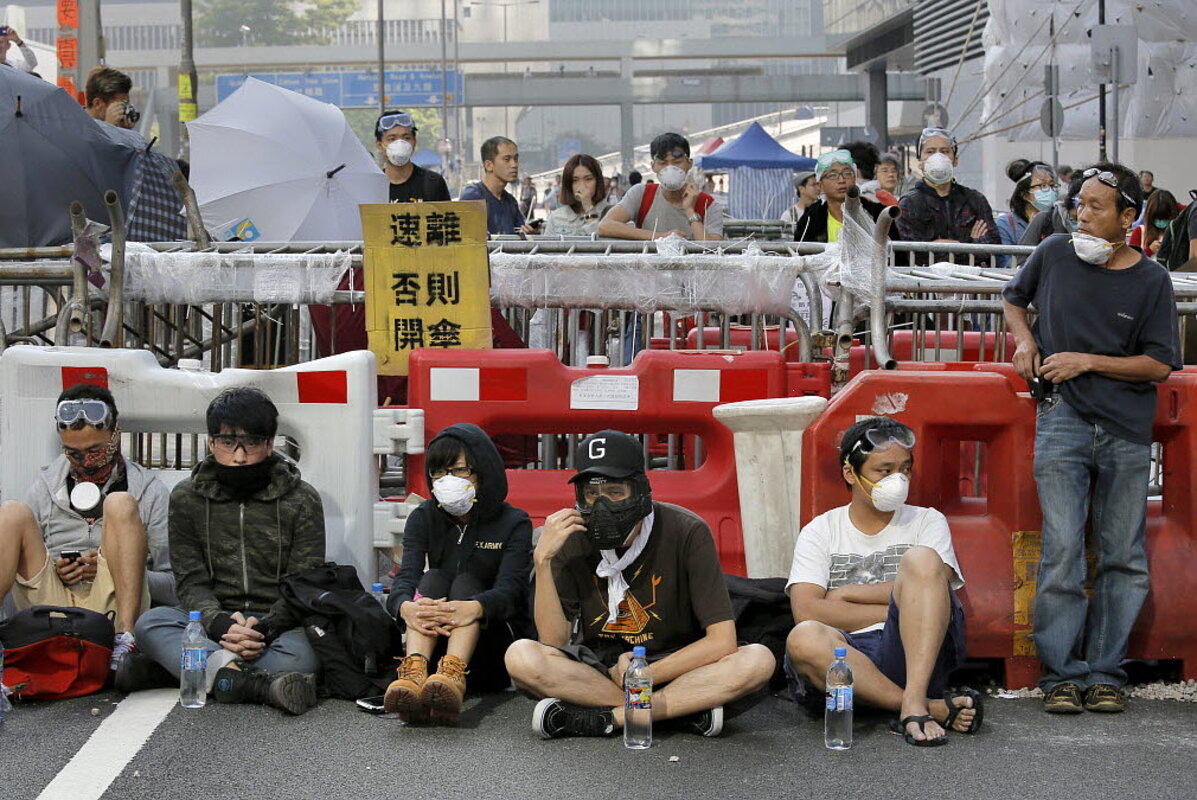Clashes at Hong Kong pro-democracy protests after police barricades removed
Loading...
A roundup of global reports
Skirmishes broke out in Hong Kong today between pro-democracy demonstrators and groups opposed to them, heightening tensions after weeks of largely peaceful protest.
Early Monday morning in order to clear space for cars to begin moving through key streets in the financial district, The Associated Press reports.
Students have been demonstrating for more than two weeks, demanding the open nomination of chief executive candidates for elections who aren’t “pre-approved” by Beijing. On Sunday, Chief Executive Leung Chun-ying called the pro-democracy movement “out of control” and said the student protests had “almost zero chance” of changing Beijing’s stance on Hong Kong.
Officers this morning said their intention in removing some barricades was not to curb the protests themselves.
Hours after the fences were brought down or pushed back, to the pro-democracy protests. Scuffles between the groups broke out, reports The Washington Post.
As they chanted slogans against the sit-in, groups of men took advantage of the chaos to rush the barricades at both ends of Queensway, a normally busy street flanked by gleaming skyscrapers.
At one end, they successfully removed many barricades, using knives to cut through the plastic ties that had held them together and even taking away some of the students’ tents in two large trucks. At the other end, they were less successful, as students quickly regrouped to man the barriers and the two sides clashed.
“There were 40 or 50 of them, all very organized — they didn't talk to us, they just removed the barriers violently,” said 23-year-old student Chokin Wong, who was sitting down in the middle of the street. “We don't want to give back the road to violent people.”
, either because they are tired of the congestion that’s built up downtown after weeks of protest, or because they are pro-Beijing, reports The New York Times. Those who turned out today against the ongoing protests told students they were pawns of the West and accused them of not being “real Chinese,” The Washington Post reports.
But even if the government or those opposed to the protests are able to send students packing – an unlikely outcome any time soon given the renewed frustrations following today’s confrontations – the students’ message is a big problem for Beijing, reports ���Ǵ���’s Peter Ford.
Behind the dispute over how Hong Kong’s next leader should be elected lies an awkward contradiction at the heart of the city’s status since its handover to China in 1997: “one country, two systems” as Deng Xiaoping put it.
For Beijing, “one country” is the key priority. For most Hong Kongers, “two systems” is what they care most about.
“It’s a question of values, of how we want to see Hong Kong develop,” says Yan-yan Yip, head of Civic Exchange, Hong Kong’s leading governance think tank. “That means there is no easy way out.”
The recent trouble boiled over when the Chinese government insisted that all candidates running for Chief Executive in 2017 elections should be vetted by a committee stacked with Beijing loyalists.
Choose any color, so long as it’s red, Hong Kong voters have been told.
...
Hong Kongers care about their freedom of choice. When the Hong Kong Transition Project, which has been monitoring public opinion since the handover, asked people last April what was the most important thing they would like to see protected and promoted, 65 percent said “Hong Kong’s identity as pluralistic and international.” Only 4 percent responded “China’s identity as ruled by the Communist party.”
Among those under 30, the picture was even more pronounced: 84 percent chose a pluralist Hong Kong, while just 2 percent wanted most to protect China’s identity.
Equally problematic for Beijing is the way in which young people increasingly identify themselves as “Hong Kong people” rather than as Chinese. The same April survey found that 55 percent of respondents under 30 defined themselves as a “Hong Kong person” and 30 percent as a “Chinese Hong Konger,” while 10 percent called themselves “Hong Kong Chinese” and 5 percent simply “Chinese.”
Tens of thousands of protesters have occupied busy roads outside the city center, as well as in two busy shopping districts. The government canceled talks with student protesters on Friday after the youth leaders called for renewed civil disobedience.





